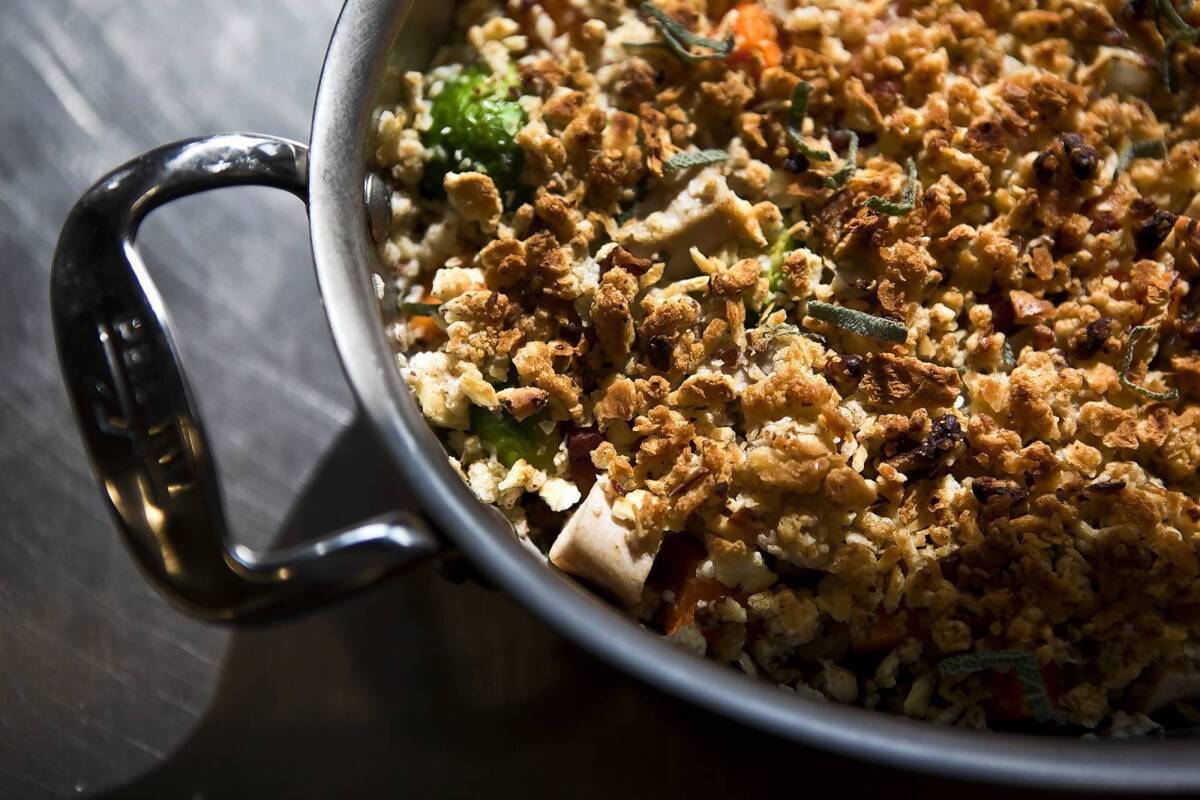Master Class: Thomas Keller explores Thanksgiving leftovers

- Share via
The annual Thanksgiving feast is a time when home cooks enjoy pulling out all the stops and preparing copious amounts of tradition-loaded dishes to share with friends and loved ones. This excitement often leads to preparing enough food to satisfy roughly twice the number of guests you plan on hosting. But that’s not necessarily bad, because it has spawned another equally beloved culinary tradition: Thanksgiving leftovers.
If the traditional Thanksgiving feast is inherently American, then the ongoing use of the surplus it generates is really a nod to the custom universal to good cooks, of making the most out of each ingredient’s every part.
Experimentation and exploration are the true loves of any successful cook. This year I challenge you to move beyond your typical leftover-based dishes and to consider broader possibilities. Don’t let anything go to waste, not the vegetables or the stuffing or the bones and trimmings of leftover turkey. This doesn’t mean repeating the same old things over and over. Use this as an opportunity to push yourself beyond comfortable dishes and explore new flavors. And look afresh at the familiar and see what new forms it might take.
These recipes provide you with a starting point. They are ideas that take into consideration what kinds of leftovers you might have on hand and what kinds of meals you plan to serve.
I have always loved a good one-pot meal, and, when you look at the pileup of leftovers created by your Thanksgiving feast, you might feel the same. While the turkey casserole is meant to mop up the various vegetable leftovers your dinner may have generated, a casserole such as this shows how you can experiment with using atypical ingredients — candied yams, for example — to create new and interesting results.
The Thai-style turkey soup is based on the same kind of frugal use of leftovers — every scrap of turkey you have can be used to make the stock. But the recipe takes this familiar stock in a very different direction, adding a variety of ingredients from the Malay Peninsula to bring lightness and a fresh flavor. While this dish is not typical of my own cooking, it is based on one of my favorite Asian soups, and the recipe offers plenty of opportunities for refinement — from the care you take in cutting the garnishes just right to the diligence in preparing and straining the broth.
Thinking about the way cooled Thanksgiving dressing conformed to the shape of the loaf pan I’d stored it in is what gave me the idea for the stuffing “pain perdu.” What if I unmolded the dressing in its loaf shape, then sliced it and cooked it on the griddle like French toast? Furthermore, the recipe brings into play such key culinary concepts as timing, planning and attention to detail. While the finished dish may appear simple, the advance work and the timing of the final preparation are opportunities to hone these skills.
Though Thanksgiving leftovers provide you with an ideal place to start, the principles I have raised here should apply to every meal you prepare. On your journey to mastery in the kitchen, this sort of thoughtfulness will take you further than almost any other lesson, because in the end, it is a mind-set that says the lessons never end.
More to Read
Eat your way across L.A.
Get our weekly Tasting Notes newsletter for reviews, news and more.
You may occasionally receive promotional content from the Los Angeles Times.










